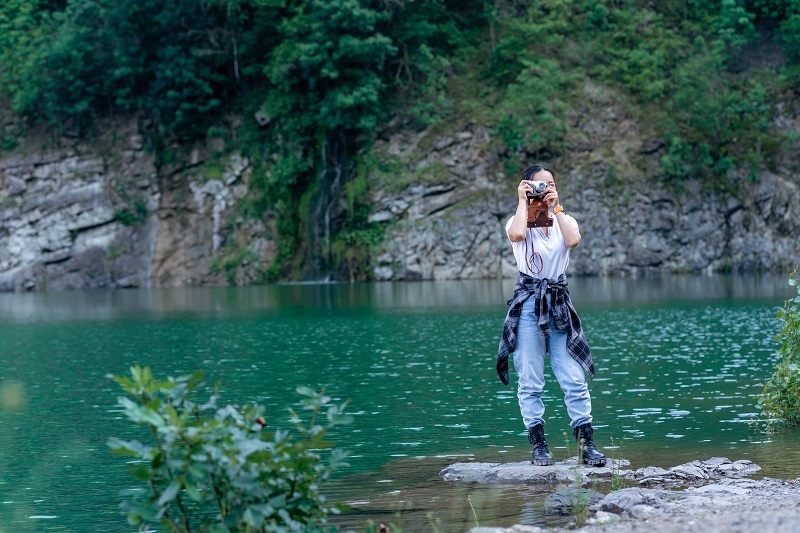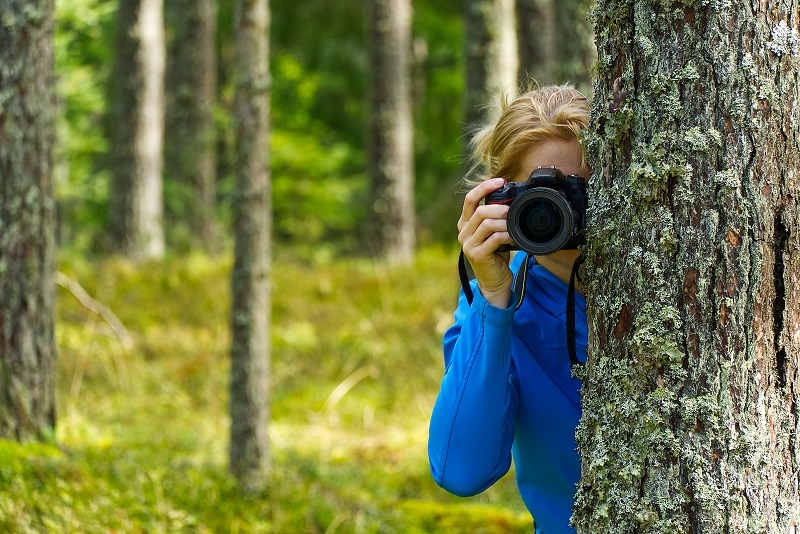
Landscape photography may be an exciting pastime activity when you enjoy being outdoors and recording the beauty of nature. You can freeze the colours of the sky, the textures of the mountains or the serenity of a lake, all with your camera. Now, being a beginner, you may be at a loss as to where to begin. Nonetheless, you can shoot some amazing shots that you can be proud of with the right tips, equipment and attitude. We will also provide simple and usable landscape photography tips in this guide to enable you to produce stunning photographs.
Landscape photography can be a daunting venture to begin with, but it can be made a lot easier by knowing a few simple principles. It is all about patience, preparation and learning how to operate your camera to get the best scenario in landscape photography.
The magic ingredient of something beautiful in a landscape picture is lighting. The so-called golden hours in early mornings and late evenings provide soft, warm light, which makes colours appear more natural. An example is that when one takes shots at sunrise over a lake, they would have magical reflections, and when the sun sets over mountains, it would produce a dramatic glow. Never expose to bright daylight in the middle of the day since it can remove colours and make strong shadows.
Creating depth is one of the most important abilities in landscape photography when you want your photos to look three-dimensional. This can be done by incorporating objects in the foreground, middle ground and the background. An example of this is to have flowers or rocks in the foreground and mountains in the background to give depth to your image.
Composition is the art of ordering in your photograph. Even basic tricks will make your shots dramatically better. The third rule is the most popular- you can think of the frames being divided into nine equal squares and put the major points in these lines. It is also possible to frame natural elements, such as tree branches or arches, in order to lead the eyes of the viewer.
Once you understand light and composition, it’s time to learn how to adjust your camera settings. Landscape photography often requires sharp focus and a wide depth of field to capture every detail.
For most landscapes, use a smaller aperture, like f/8 to f/16. This keeps both the foreground and background in focus. If you’re shooting in low light, balance this with a slower shutter speed to avoid underexposure.
Shutter speed affects how movement is captured. Fast shutter speeds freeze motion, which is good for wildlife or windy scenes. Slow shutter speeds can create beautiful effects with moving water, like smooth waterfalls or gentle waves. Carrying a tripod is essential for slower shutter speeds to avoid blurry photos.
Keep your ISO as low as possible, around 100–400, to reduce noise in your photos. Higher ISO can help in dark conditions, but might make your image grainy.

Having the right lens can make a huge difference in your landscape photography. Fortunately, you don’t need expensive gear to start.
Your photography improves when you explore new environments. Each location offers unique opportunities for capturing landscapes.
The USA is full of stunning national parks perfect for beginners. Yellowstone, Yosemite, and Grand Canyon offer dramatic landscapes and iconic views. Early mornings and weekdays are ideal to avoid crowds.
You don’t have to travel far to practice. Local parks, hiking trails, or riversides can be great spots to experiment with composition and lighting. Observing nature closely helps you notice small details that make your shots unique.
As soon as you have mastered the rudiments, play around with creative techniques so that you can make your photographs stand out.
The long exposures smooth the water, or they give a motion trail to the clouds. When you are shooting in the day, use a tripod and a neutral density filter to make the light less intense. To illustrate, the dose of a 5-second exposure over a waterfall can appear silky and dreamy.
Lakes, ponds and puddles provide perfect reflections. When there is a lot of early morning light, the reflections in the mirror of water can be the best. Shadows also provide drama, particularly when taking shots of mountains or trees.
To offer an unprecedented view, drones can offer bird's-eye views of landscapes. DJI Mini 3 Pro, with a price of about 759, is easy to use and small in size. Patterns and scenes that cannot be seen on the ground can be captured using aerial shots.
Landscape photography includes editing. It assists in advancing colours, contrasts and details such that your photos appear more like what you viewed in the real world.
Landscape photography is not only about taking pictures, it is also about experiencing nature and sharing your vision. You can begin taking pictures of the landscape that will be moving and beautiful with these landscape photography tips. It is worth remembering that planning, experimenting and being outdoors result in the best photos. You can invest in cheaper lenses, train on the tips of composition and experiment with the settings of your cameras to make your landscapes look alive. Most of all enjoy making discoveries and letting nature write to you.
This content was created by AI